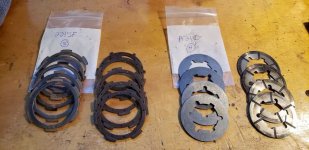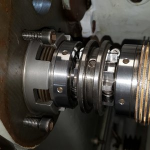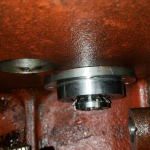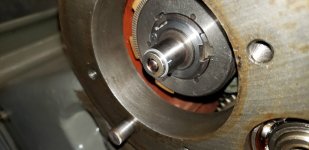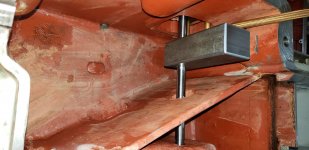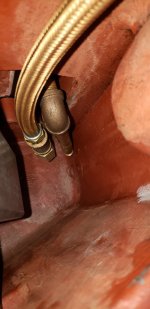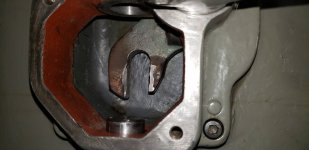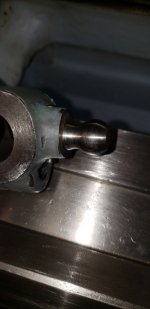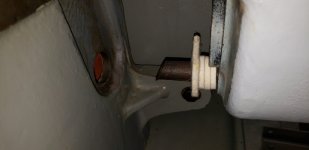Peroni
Cast Iron
- Joined
- May 18, 2007
- Location
- Yadkinville, NC
New to me 1957 12 x 30 model C lathe I just picked up from a fellow forum member. I need to remove the main clutch for servicing and repair. I've got the drive pulley and housing off and the "clutch shaft bearing housing dowel" removed but I cannot get the main clutch assy to move. The section view in the manual is a bit crowded and hard for me to see. It looks like the oil pump is driven via a slot in end of the clutch shaft. I can't tell if the pump is bolted to the clutch brake housing or headstock casting? Hopefully someone has been down this road before?

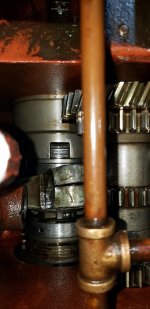
And the counterweight on the clutch control rod shaft - can it be loosened by removing and reaching in thru the oil filter housing or does the headstock need to come off? Bell crank end of that shaft if buggered up and contributing to the clutch problems. It may be able to be fixed in situ but I'd rather replace it with a new one.


And the counterweight on the clutch control rod shaft - can it be loosened by removing and reaching in thru the oil filter housing or does the headstock need to come off? Bell crank end of that shaft if buggered up and contributing to the clutch problems. It may be able to be fixed in situ but I'd rather replace it with a new one.




